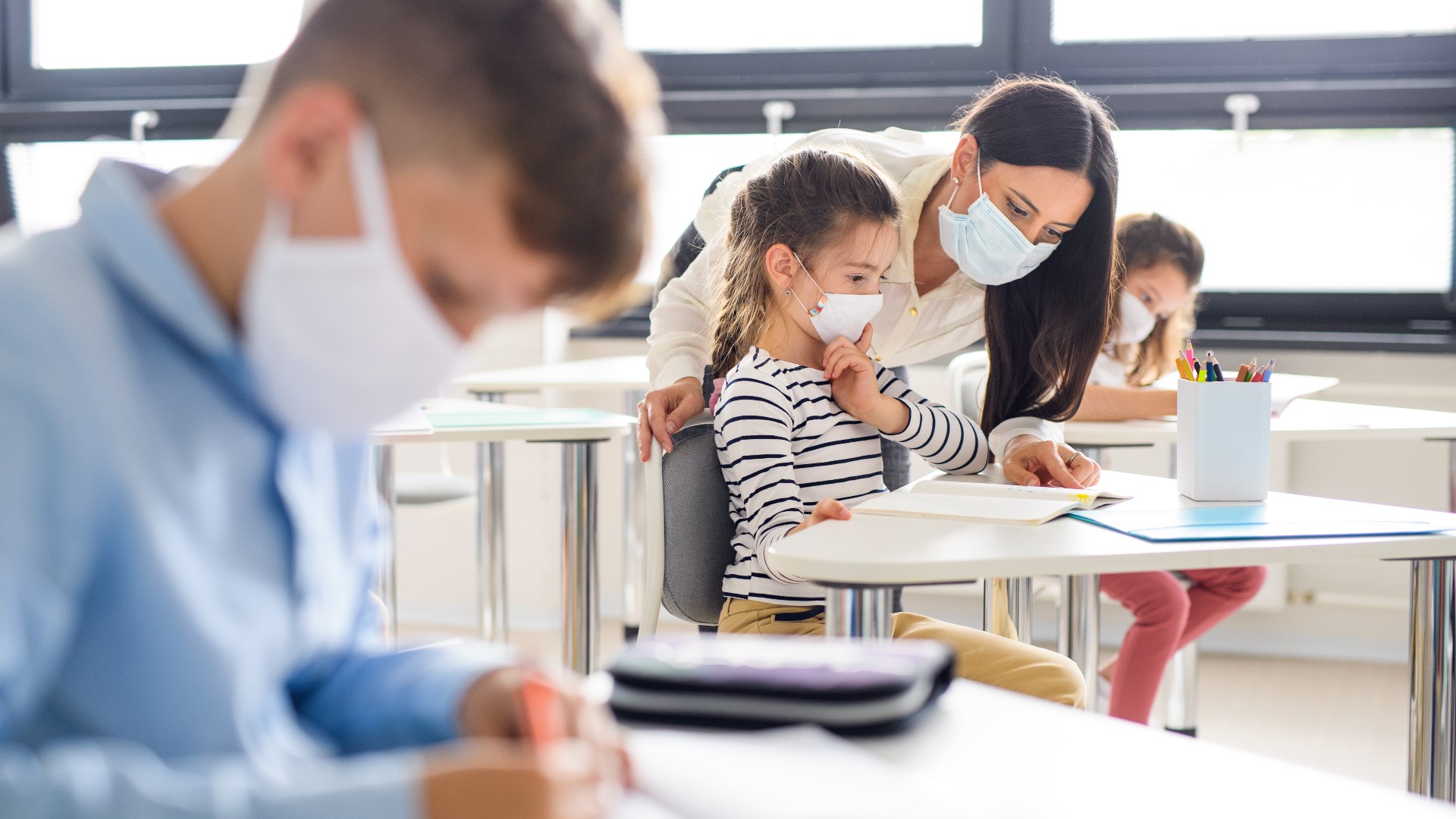MAINE, USA — On Friday, July 31, the Maine Department of Education is expected to release its first guidelines, designating school districts as green, yellow, or red COVID-19 risk zones. Those will determine whether students can return to classrooms in the fall.
While that aspect of the future is still unclear, students who do go back to in-person learning will be required to wear masks, per state guidelines. It’s a concept that many adults still are not quite used to yet – so mental health experts are offering parents tips regarding how to navigate this conversation.
Chris McLaughlin is the Associate Vice President of Community and Pediatric Services at Northern Light Acadia Hospital. He says families should approach this topic as they have other safety discussions.
“We’re talking about this in the same ways we talk about seat-belts,” McLaughlin told NEWS CENTER Maine. “We don’t want to engage in power struggles, but safety always has to come first.”
McLaughlin suggests family members:
- Make sure kids know the “why”. Explain to them that masks help to prevent germs and infections, just like washing your hands does.
- Get kids in the habit. Have them wear their masks for 10, 15, or 20 minutes at a time each day to help build up tolerance.
- Focus on non-verbal preparation. Teach your kids how to pay attention to eye contact and eye language. Help them learn to communicate that way, since masks can make it difficult at first to understand facial expressions.
- Choose a type of mask your child is comfortable wearing. Have them try on paper and cloth masks with ear bands, as well as masks that pull up over the nose, to determine which they like best. Allow them to have a say in the matter to feel like they have some control.
- Set a good example. Regardless of opinions about masks, McLaughlin says parents and guardian members should wear them where and when they are supposed to, as a model for their kids.
“As important as explaining the ‘why’ is modeling,” said McLaughlin. “We know this is a very charged issue. We know that there are a ton of different opinions about it; and honestly, none of that matters right now. This is what we’re being asked to do.”
McLaughlin says families should try to have a little bit of fun in the process of learning this summer, if they can. Try taking selfies with masks, doing mask ‘fashion shows’, encouraging kids to dress up as doctors or veterinarians (professions that commonly use masks), or putting masks on stuffed animals – all to normalize the concept. Keep masks around the house and the car, as well, so kids are used to seeing them.
McLaughlin also has advice for teachers who are allowed to welcome students back to the classroom. Consider an arts and crafts project for students to bring in their own masks (or materials to make a mask) and decorate it. Then, it will become their own, and they may be more excited to wear it.
Teachers should also try to put up pictures or posters about different ‘eye languages’ and what they mean and reserve space in the classroom as a ‘mask-free’ zone for students to go, if they need a break.

